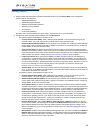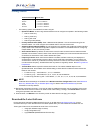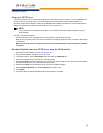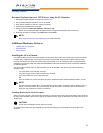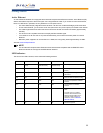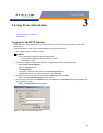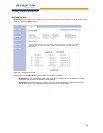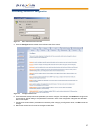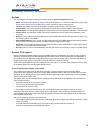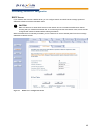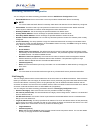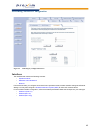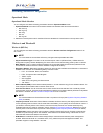
36
4
Performing Advanced Configuration
• Configuring the AP Using the HTTP/HTTPS Interface
• System: Configure specific system information such as system name and contact information.
• Network: Configure IP settings, DNS client, DHCP server, and Link Integrity.
• Interfaces: Configure the Access Point’s interfaces: Wireless and Ethernet. Also describes configuring a Wireless
Distribution System (WDS).
• Management: Configure the Access Point’s management Passwords, IP Access Table, and Services such as
configuring secure or restricted access to the AP via SNMPv3, HTTPS, or CLI. Configure Secure Management,
SSL, Secure Shell (SSH), and RADIUS Based Access Management. Set up Automatic Configuration for Static IP.
• Filtering: Configure Ethernet Protocol filters, Static MAC Address filters, Advanced filters, and Port filters.
• Alarms: Configure the Alarm (SNMP Trap) Groups, the Alarm Host Table, and the Syslog features.
• Bridge: Configure the Spanning Tree Protocol, Storm Threshold protection, Intra BSS traffic, and Packet
Forwarding.
• RADIUS Profiles: Configure RADIUS features such as RADIUS Access Control and Accounting.
• SSID/VLAN/Security: Configure security features such as MAC Access Control, WPA, WEP Encryption, and
802.1x. Configure up to 16 VLAN and SSID pairs per wireless interface, and assign Security and RADIUS Profiles
for each pair.
Configuring the AP Using the HTTP/HTTPS Interface
Follow these steps to configure an Access Point’s operating settings using the HTTP/HTTPS interface:
1. Open a Web browser on a network computer.
NOTE
The HTTP interface supports the following Web browser:
• Microsoft Internet Explorer 6 with Service Pack 1 or later
• Netscape 6.1 or later
2. If necessary, disable the Internet proxy settings. For Internet Explorer users, follow these steps:
– Select Tools > Internet Options....
– Click the Connections tab.
–Click LAN Settings....
– If necessary, remove the check mark from the Use a proxy server box.
–Click OK twice to save your changes and return to Internet Explorer.
3. Enter the Access Point’s IP address in the browser’s Address field and press Enter.
– Result: The Enter Network Password screen appears.
4. Enter the HTTP password in the Password field and click OK. Leave the User Name field blank. (By default, the
HTTP password is “public”).
– Result: The System Status screen appears.



